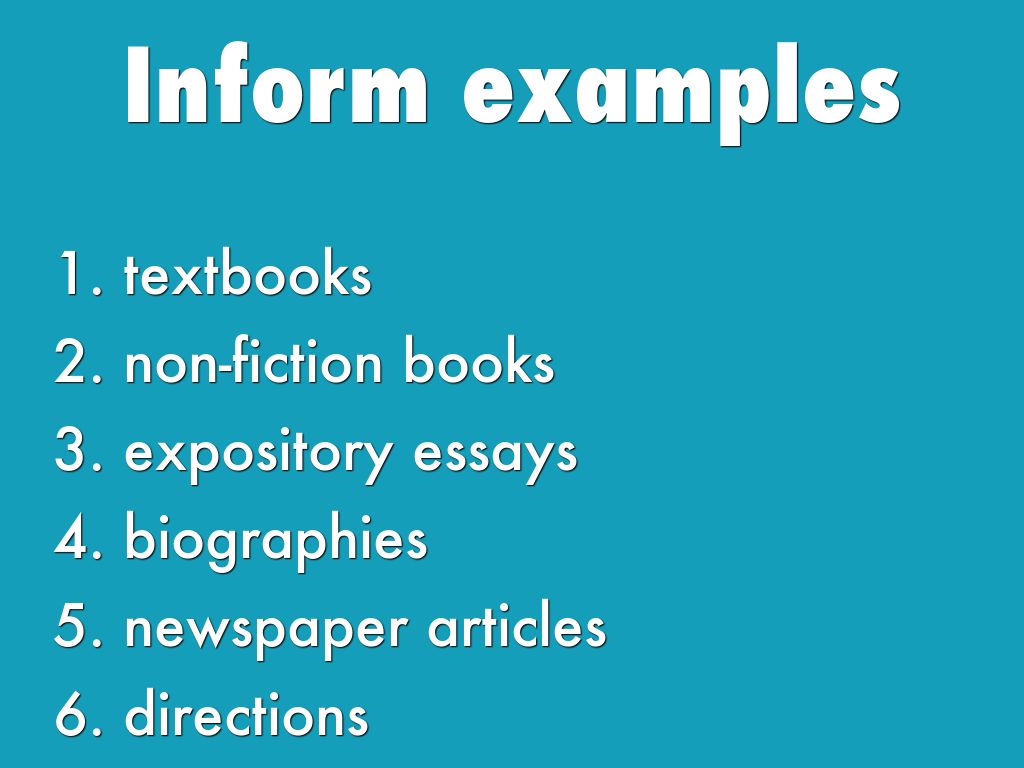
George tells fun and interesting facts about each of America’s presidents. In her book, So You Want to Be President?, St. George seek to share information by way of comedy. As a result, students should be able to identify Doreen Rappaport’s two-fold author’s purpose for writing. She also tells his story in such a way that readers can’t help but acknowledge that King was a strong leader who worked hard to change the world. In Martin’s Big Words, for example, Rappaport shares many facts about Martin Luther King Jr.’s life. She also seeks to persuade her readers to consider the lessons we can learn from the people she writes about.

Through her writing, Rappaport shares information.

Here are some examples of authors who blend their purpose of sharing information with another author’s purpose.ĭoreen Rappaport is the author of dozens of books that seek to tell the stories of influential and inspiring people in history. Some authors use it to persuade and entertain readers as well. Strict nonfiction, like National Geographic Kid’s Planets, uses features of nonfiction text and a matter-of-fact language to present facts – and just the facts. Nonfiction by definition is all about the facts. Not only can fiction be entertaining, but authors can also use fiction for the purpose of persuading readers to consider important life lessons. Through relying on basic story elements and a cast of appealing characters, Henkes is able to both entertain his reader and persuade them to treat people with kindness.Īnd so, as a result of sharing fiction books like Chrysanthemum with readers, you can teach your students that an author’s purpose can be two-fold. Take Chrysanthemum, for example a highly relatable story about teasing, self-esteem, and acceptance. What happens when an author seeks to both entertain their reader and share a message or a lesson with readers? With fictional storytelling, expert authors like Kevin Henkes can craft stories that work to share life lessons with readers. But through personifying farm animals, Cronin is able to write a truly funny and engaging book thereby achieving her purpose of entertaining readers.īut what happens when a fiction writer has more than one purpose? If this book featured a cast of human characters, it would not be nearly as funny. The basic premise of the story is that Duck becomes frustrated with Farmer Brown and holds an election to take over the farm. Duck for President, for example, was clearly written to entertain the reader. When an author like Doreen Cronin seeks to entertain her reader, she does so with a fictional cast of silly animals who make laugh-out-loud mischief. By teaching students to connect common genres to the author’s purpose, you can help them set a purpose for reading and set expectations for the text. Connect Author’s Purpose to GenreĪn author’s purpose for writing is almost always connected to the genre of the text they write. Once readers are familiar with the basic reasons for an author to write a text they can use what they know to deepen comprehension, think critically about text, and just plain enjoy what they read.

Start by taking with students about the reasons why an author writes.


 0 kommentar(er)
0 kommentar(er)
